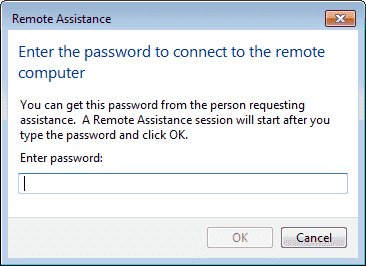Remote Assistbe Tech Help
According to the U.S. Bureau of Labor Statistics, 19% of people with a disability are employed. In the UK, according to the Office for National Statistics, the number is higher (53%), but it’s still appallingly low in both cases especially when compared with non-disabled workers.
The rapid rise of remote employment should be a blessing in disguise as it removes some of the physical barriers job candidates with a disability face in becoming a more active part of the workforce. However, it needs to be paired with a commitment to accessible technology and renewed employer focus on inclusion.
Remote Work and Accessible Jobs
Assistive Technology Assistive technology is a broad term and may mean different things to different people but for our purposes we will define it as the following: 1. Devices or systems to help people who have no skilled medical needs manage their disabilities. Tip 2: Assess and review what your students who use assistive technology will need for each piece of online instruction. One way to achieve this is to provide instruction in a way that takes the specific assistive technology tools your students use into account. Assistive technology, by definition, is any item, piece of equipment, or product system that is used to improve a student’s functional capabilities. In the school setting, parents, teachers, and related service providers collaborate to determine the needs of each individual student. Current remote and hybrid changes require creativity.
With the rise of remote work as one effect of the COVID-19 pandemic, workplace accessibility has become more important than ever. For disabled people, this rise in remote work presents an opportunity to gain entry to the workforce. Simply by giving disabled workers the opportunity to work at home without having to commute, workplaces are improving opportunities.
= 7 days. “Being able to work from home is a stress relief,' said Matthew Ramir, senior developer at Bounteous, a Chicago, Ill.-based provider of digital experiences. 'It gives me the opportunity to function as a normal employee and navigate the workplace because as long as I’m working, time is not an issue.”
Remote Assistbe Tech Help Wanted

In principle, remote work allows for democratization of work and the ability to build an unbiased, anti-discriminatory workplace. However, remote work alone can’t change people’s mindset nor make it easier for disabled workers to do their job. Software developers and technology creators need to build their products with accessibility in mind.
Related Article: How Companies Can Bake Diversity and Inclusion Into Their DNA
The Rise of Accessible Technology
Accessible technology can be used by people with different functional abilities, which means that it enables users to use it in the way they see fit. In the case of a desktop computer, accessibility allows for different ways to input information, be it with the keyboard, the mouse or speech-to-text capabilities.
Most operating systems today, from open source to proprietary ones like Windows and MacOS, offer accessibility options that can improve access for disabled people to do remote or online work. Pro tools 11 crack ilokblog.
“Organizations looking to be disability-friendly and accessible need to embrace and leverage technology,' said Janine King, managing director of Cambridge, UK-based iansyst, a supplier of assistive technologies. 'Managers need to use all the technology tools at their disposal to support the creation of an accessible workplace.”
And when it comes to tools, we’re not talking about adding a ramp or an escalator. It means thinking of disability from a broader perspective and leveraging technology to bridge the gaps. Before committing to any accessible technology, ask the following questions:
- Was the platform designed to meet accessibility standards?
- What are the captioning, sign language and audio description capabilities?
- Is the captioning accurate?
- Was the platform tested for accessibility?
- Can disabled users take advantage of all its functionalities?

Remote Assistbe Tech Helper
Related Article:What's Under the Hood for Workplace Diversity and Inclusion Technology?
The Future of Accessible Jobs
Remote Assistbe Tech Help Desk
The future of accessible jobs is being shaped right now. The increased reliance on technology that the pandemic brought will impact how people work in the future, with a sharp increase in accessibility as one the main tenets of work.
For disabled people, the growth in remote positions will make it easier for them to find good-paying jobs and more inclusive work environments. However, to make the most of the opportunity companies will need to embrace a more inclusive perspective towards disabled people and accessibility, and that starts by recognizing the potential contributions disabled individuals make to the workplace.
Without well designed initiatives, the growth of remote work won’t be sufficient to boost the growth of accessible jobs, thus limiting opportunity for millions of disabled workers around the world to make a living in the post-pandemic world.
